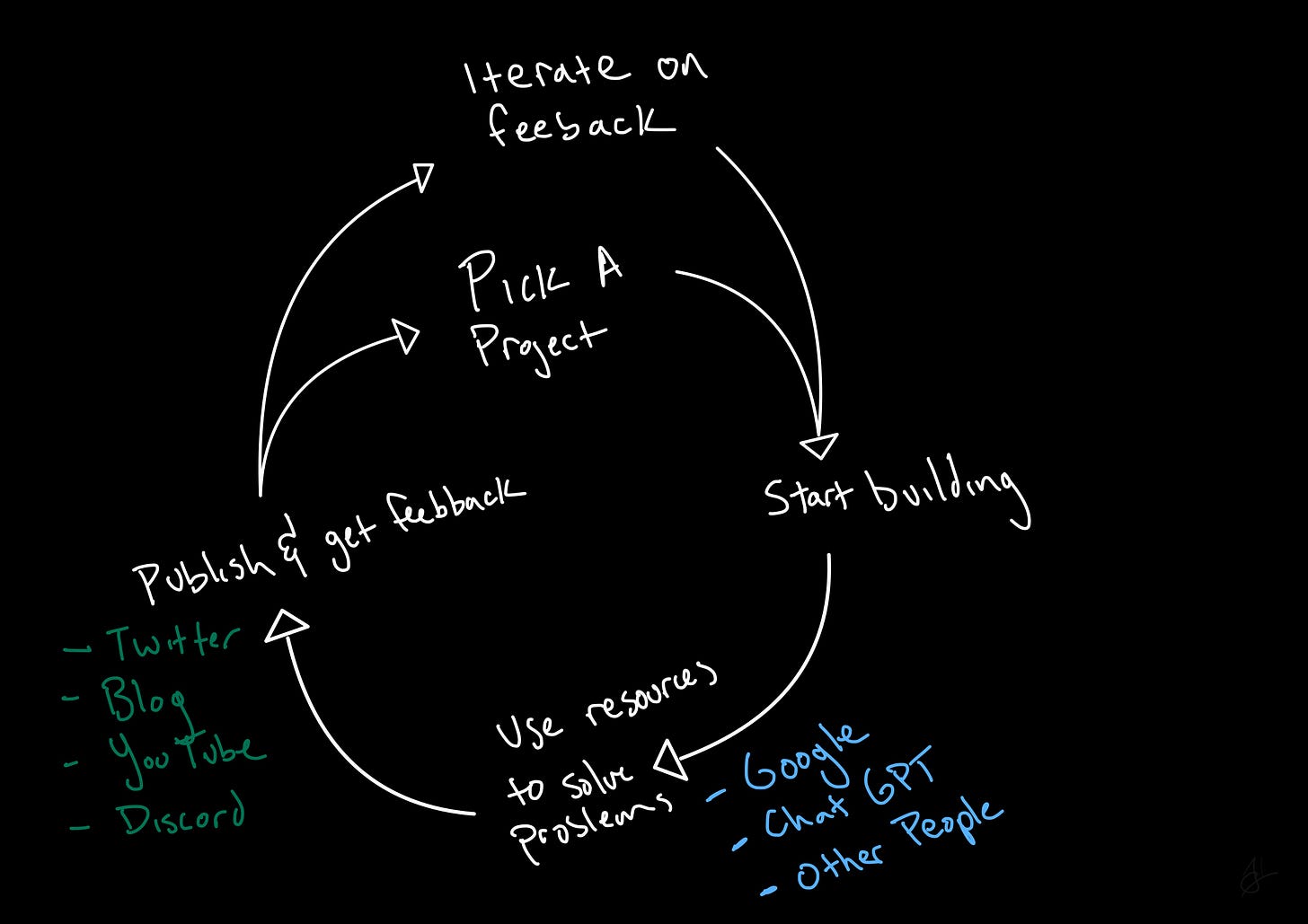Explaining Project Based Learning
and how it can help you learn any skill 2 times faster
Learning a new skill can take a lot of time. Learning a new skill the wrong way takes even more time.
Project-based learning has been my go-to method for learning new skills for as long as I can remember. It allows someone to learn new skills faster and get better feedback to improve than alternative methods. While mostly everything in this article relates to coding and technical skills, it’s a framework I believe that this process is applicable to any skill you want to learn.
Let’s look at the image below that I drew which I’ll call the project-based learning loop.
In this article, I’ll go over each section and explain how you can leverage those to learn any new skill.
1. Pick a project
Learning a new skill should be exciting. It should make you want to continue working on it when you eventually hit a wall and need to solve different problems. When picking a project to learn your new skill, make sure that the project is something you enjoy or are interested in.
For example, if you are really into video games, learn how to make the snake game. Or if you like sports and are learning machine learning, create a game prediction model and simulate entire seasons or rank teams to find out who is the best.
Ideally a project is something that is going to be for experts of that skill, but it shouldn’t be something that is super easy that doesn’t allow you to progress at all. Like Goldilocks said it should be just right.
As you progress in your skill these projects can start to be more advanced so you can continue to improve.
2. Start Building
If you don’t ever take any action, you’ll never learn a new skill. Building
3. Resource Driven Problem Solving
Trying to learn a new skill without using the plethora of resources on the internet is like trying to learn how to walk again without any guidance or instruction.
Unless you are inventing something brand new, it’s more than likely that someone has done or learned the skill you are trying to learn and most likely someone has published or made something on how to learn said skill.
Resources can be methods of using Google, new AI based methods like using ChatGPT, or even just using your network of people that are also interested in the same subject.
4. Publishing for Feedback
Sharing your work on a platform like Twitter, Medium, YouTube, etc is the best and quickest way to get feedback and grow.
When I first was trying to learn sports analytics, I started posting content on Twitter with just some simple graphs.
You can see that my graph is super ugly, the names are all clustered, and the analysis isn’t super insightful. But because I kept posting things I was working on, I got really good feedback, ideas, and more in developing my analytical skills.
Without taking the leap and sharing what I was working on, I would have never created a YouTube channel, been able to create my first course (link here if you want to check it out. Use code emailsub at checkout and you’ll get 20% off), or have gotten the job I work in now.
Some people might laugh or say you’re dumb, but there are plenty of others that will be willing to give good feedback and will start to become part of your network you can use in part 3.



